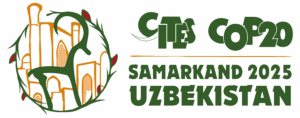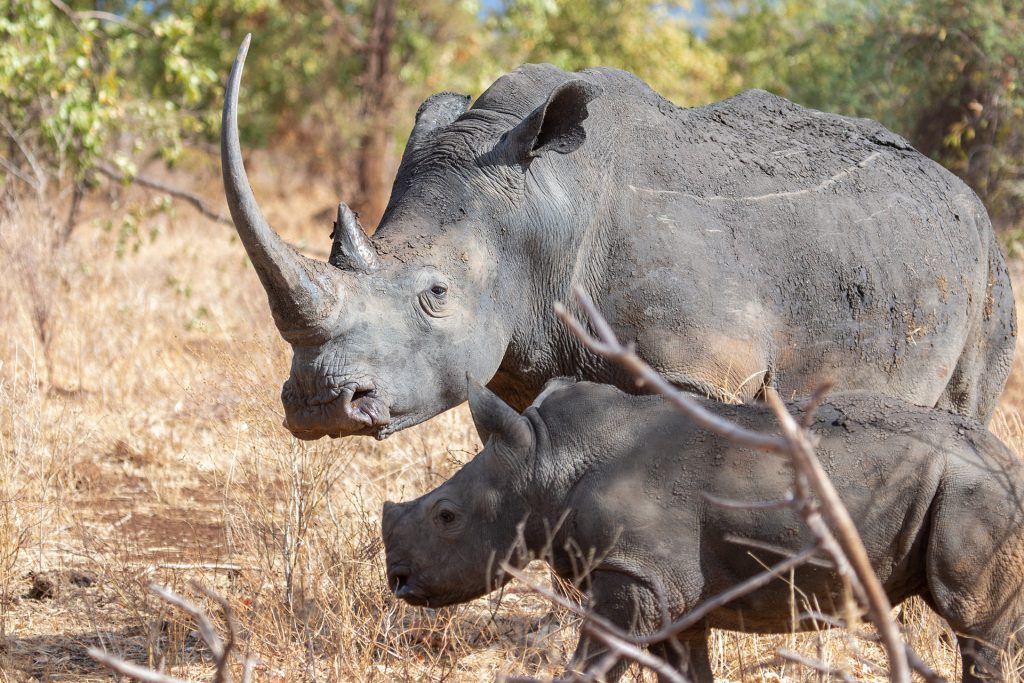CITES CoP 20 – Key Questions Answered
Ahead of CITES CoP20, starting 24 November 2025, we answer the most commonly asked questions about CITES and where Born Free stands on key issues.
What is CITES?
CITES stands for ‘Convention on International Trade in Endangered Species of Fauna and Flora’. In essence, it is an agreement between governments, established in the early 1970s, whose purpose is to regulate international trade in wild animals and plants (including trees), with the express purpose of ensuring that trade does not threaten their survival.
This regulation happens through the placement of species on one of three lists (or Appendices) which have differing levels of protection and requirements for international trade to take place. Once a species is listed, most of the work of the Convention is focused on implementing those listings, and on any additional work which may be required to address the needs of those species as they relate to international trade.
There are currently 185 country members of CITES (known as Parties) – representing the vast majority of the world’s Governments – which have agreed to abide by what is decided at CITES meetings. Governments are legally bound to implement the Convention’s Articles, and failure to do so can lead to sanctions being imposed, which usually take the form of trading bans on CITES-listed species.
Why is CITES so important?
The trade in wildlife is worth billions of dollars and involves hundreds of millions of plants and animals annually. This includes live animals, as well as parts and products derived from them such as food items, exotic leather goods, arts and crafts, tourist curios and so-called traditional medicines. CITES also regulates trophy hunting in some listed species.
Essentially, CITES has the authority to determine what can and cannot cross country borders for the purpose of trade, and make other critical decisions regarding the roughly 38,000 species currently listed on its Appendices, which include tigers, rhinos, pangolins, lions, cheetahs and elephants. The implications of international wildlife trade for both conservation and animal welfare, and the importance of strictly regulating this trade, could not be greater.
The Convention has been key to efforts aimed at securing the survival of many threatened species. CITES is widely regarded as one of the most important environmental agreements between the world’s governments, and the natural world would undoubtedly be in a much more precarious state without it. However, in the face of the ever-escalating threat posed to species across the world by the wildlife trade, Born Free believes that CITES needs to do much, much more.
What is being discussed in November and December 2025 in Uzbekistan?

Roughly every three years CITES has a two week-long meeting, called the Conference of Parties (or CoP for short), which is the main decision-making body of the Convention.
This year is the 50th year since the Convention came into effect, and the 20th CoP will take place in the city of Samarkand, Uzbekistan, from 24th November-5th December. Once again, much will be at stake – for the industry that profits from international wildlife trade, for governments themselves and, of course, for the species being deliberated over.
Under consideration will be 51 proposals which will impact over 200 animal species, placing them on the Appendices for the first time, changing their listing from one Appendix to another, or describing the scope of their listing on an Appendix. These proposals include iconic mammals such as elephants, rhinos and giraffes, marine species such as sharks and sea cucumbers, reptiles such as adders and geckos, as well as frogs and fish.
In addition, there are also some 146 working documents which will be discussed and will cover many varied matters relating to species already listed on the Appendices, from how the Convention’s rules are implemented and whether certain countries should be penalised for failing to implement them, to strategic issues such as the role CITES should play in reducing the risk of future pandemics emerging from traded wild animals.
Who attends CITES meetings?
All Parties (signatory Governments) have the right to send delegations to CITES meetings. These delegations vary in size, but each Party delegation present at the meeting is allocated one vote. In order for a proposal to be approved, a two thirds majority of those present and voting is required.
Inter-governmental and non-government organisations and individuals can also apply to attend CITES meetings and are known as ‘observers’. Observers can make statements from the floor, and attend and contribute to working groups, but they do not have the right to vote. Born Free will be sending two of its policy team members to the meeting in Samarkand. Media representatives will also attend and report on the deliberations and outcomes.
It is anticipated that, in total, upwards of 2,000 delegates will attend
What is Born Free’s position on key issues?
 With such a vast agenda, Born Free will be focusing on our priority species and issues. These include:
With such a vast agenda, Born Free will be focusing on our priority species and issues. These include:
- Giraffe, black and white rhinos, African elephant, peregrine falcon – proposals to weaken protection from trade are on the table and Born Free will be strongly opposing them. In the case of black rhinos, Namibia is proposing that CITES should allow it to sell off 4.6 tonnes of rhino horn from this Critically Endangered species. We will be vigorously opposing this proposal, which would have devastating impacts for rhinos across their range thanks to the increased demand for rhino horn that it could stimulate.
- Asian elephants – while the endangered Asian elephant has been listed on CITES Appendix I since 1975, with a global population ten times smaller than that of its African cousins, the species continues to be threatened by the trade in live animals and derived body parts, particularly skins. With no functional independent system in place for CITES to monitor this trade, it is vital that the species remains in the spotlight. Born Free is urging that, at a minimum, CITES maintains the existing mechanism it has for Parties to report back on their efforts to address illegal trade in live elephants and parts and products derived from them. Read the briefing produced by Born Free and the Environmental Investigation Agency.
- Giraffes – Africa’s tallest animals were only listed on CITES Appendix II in 2019, yet several southern African countries want to remove their populations from the listing altogether. Born Free will be urging Parties to oppose the proposal, so that the considerable international trade in giraffe parts and products will continue to be regulated and monitored.
 Cheetah – numbering at just over 6,500 mature individuals in the wild, cheetah continue to be highly threatened by the illegal trade in cubs for the exotic pet market in Gulf States. Despite range countries doing what they can with precious few resources, ‘consumer’ countries continue to deny responsibility and undermine progress. Born Free will be urging for the adoption of a process which would lead to country-specific and targeted measures.
Cheetah – numbering at just over 6,500 mature individuals in the wild, cheetah continue to be highly threatened by the illegal trade in cubs for the exotic pet market in Gulf States. Despite range countries doing what they can with precious few resources, ‘consumer’ countries continue to deny responsibility and undermine progress. Born Free will be urging for the adoption of a process which would lead to country-specific and targeted measures.
- The role of CITES in pandemic prevention – as the international wildlife trade regulator, CITES has a clear role to play as the keeping, breeding, transporting and trade of wildlife involves some key risk factors in the emergence of pathogens from wildlife. Key measures are being proposed, but how these are progressed will be critical: Born Free will be pushing for them to be enshrined in a ‘Resolution’, which is a permanent measure Parties will then be required to implement, rather than through ‘Decisions’ which are time-bound and limited in scope.
- The welfare of wild animals in international trade – reflecting our strong focus on animal welfare, Born Free will be calling on Parties to strengthen measures to improve the welfare of live wild animals in trade, with a focus on capture, preparation, shipping, and the suitability of the final destinations for such animals.
What does CITES mean for wildlife?
For wildlife species that are traded internationally, CITES can be a lifeline. In a world with mounting threats to wildlife populations and their ecosystems, the last thing many species need is being removed from the wild to be sold as exotic pets, or for their skins to be made into luxury items for the fashion industry.
An Appendix I listing is equivalent to a ban on international commercial trade in a species, while Appendix II requires that strict conditions for any further trade are met, through a system of permits designed to ensure wildlife in trade is legally acquired and the trade doesn’t harm the conservation of wild populations. Listings apply to all Parties, whether they are importing or exporting the species in question.
Who is Born Free working with?
Born Free is a founding member of the Species Survival Network (SSN), a global coalition of over 80 non-governmental organisations (NGOs) committed to the promotion, enhancement, and strict enforcement of CITES. SSN produces a ‘digest’ prior to each CITES meeting, outlining the collective position of its member organisations on every proposal and working document to be discussed at the meeting. Our co-founder and Executive President, Will Travers, is also President of SSN.

